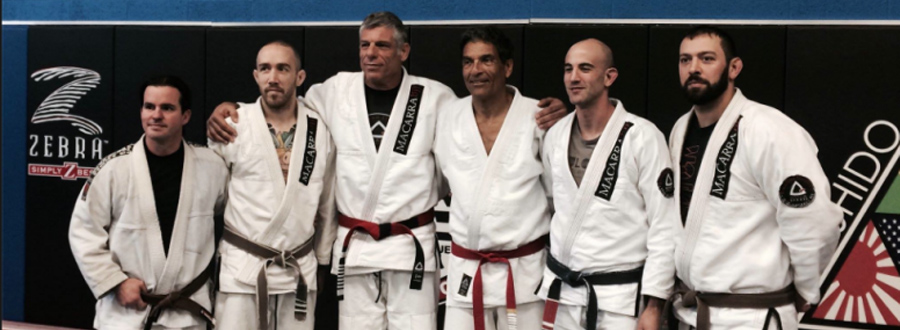“It’s not who’s good, it’s who’s left.” -Chris Haueter
Tonight a friend and local gym owner was promoted to black belt. As a long-time friend and training partner, it was obviously an emotional and heartfelt moment; one I was happy to be a part of.
For those of us lucky enough to be a part of jiu jitsu for long enough, we know just what getting a black belt represents. Time and lots of it. Injuries and lots of them, and a sort of bull-headed stubbornness that only a tiny percentage of the population possess. After all, almost everyone you start training with will disappear before getting to this point.
What’s even more impressive about tonight is that my friend Doug is well into his 60’s and still at it after surviving cancer and 2 heart attacks.
As an instructor, school owner, and part-time competitor over 40, longevity and finding the keys to it, are higher on my jiu jitsu wish-list than any seminar, exotic camp locale or new technique. I’m constantly looking to those still battling it out daily at 45, 55 and a few cases; 65 for inspiration and advice on how to get there and still have use of both arms, legs and a functioning lower back in the process.
They say 40 is the new 20, and in terms of breakthroughs with supplements, training knowledge, and the science around recovery, it very well might be. 20 years ago when I started BJJ, none of this information was readily available but now thanks to science, youtube and a huge population of jiu jitsu practitioners training into their 40’s and 50’s, good information is everywhere.
So how does the aging jiu jitsu athlete stay healthy and continue to train well into and long past his or her 40’s given everything we now know? Here are a few good places to start.
Stretch, stay mobile and warm up correctly– develop a daily stretching, warmup and mobility routine for before and after you train and stick to it. Don’t have a foam roller or other implement of torture for getting rid of adhesions in your muscle? Pick one up and use it daily. Keep your muscles and joints healthy and it will do wonders for your ability to train more and move better.
Lift weights sensibly- One of the biggest things I have done to help maintain and strengthen my body for jiu jitsu has been the addition of a weightlifting program a few days a week. Done correctly and sensibly, deadlifts and squats will do wonders for preventing knee injuries and strengthening your legs. Making hip drive more explosive for escapes and sweeps with kettlebells and building a strong low back and posterior chain will also help you stay healthy and feel better on the mat as you get older.
Rest, recover, and sleep and eat– Listen to your body and do not over train. Most of my injuries over 40 have come when I pushed myself to train when my body told me to rest. Be smart about your sleep and try hard to keep your schedule consistent. What you put in your mouth and enough of it (calories) will also aid with recovery and help your aging body function at its peak.
Tape your fingers and toes– Years of abuse from grappling can mean arthritis and limited mobility in your hands and feet as things get injured. Be proactive and tape your fingers before you train and before you need to. Those smaller weaker fingers and toes will thank you.
Roll hard, but flow harder– hard training is for many of us the most fun and competitive part of BJJ. It’s why we get up in the morning and often go to bed sore at night. However as you get older, though still possible to train hard and compete often; pace yourself and substitute hard rolling some days with drilling and flow rolling. If your body does not feel great one day, be aware of pushing too far past your comfort zone and read #6- 7 carefully… good training partners and letting the ego go can make or break (literally) those days when you might want or need to dial things back.
Tap early and often– Seriously!
Good training partners– Are worth more than that limited edition Shoyoroll gi you’ve had your eye on. Simply put, they are and will be the lifeblood of your longevity in jiu jitsu. Seek out partners who know how to train with you and do not be afraid to say no to someone you do not feel is wise to train with on any given day. Stick with the lighter and more technical members of your gym on days when you are not training hard or doing that second or third session and find a white belt assistant you can mentor and help to be a great partner for drilling or trying things.
Adopt a Positive mental attitude– We all like to win, but accepting that the journey, the art and just being on the mat are enough sometimes is key. Win or lose, stay positive and remember the quote at the top from Chris Haueter, one of the O.G.’s of the American BJJ community and still rolling hard and spreading the art into his 50’s. You attitude is everything and winning, although great is not enough to keep you training for the long haul. Too much ego can be the downfall of your long term training plan.
Got anything to add to the list?
Shoot me a message and I’ll see you on the mat, hopefully for a good long time to come!




